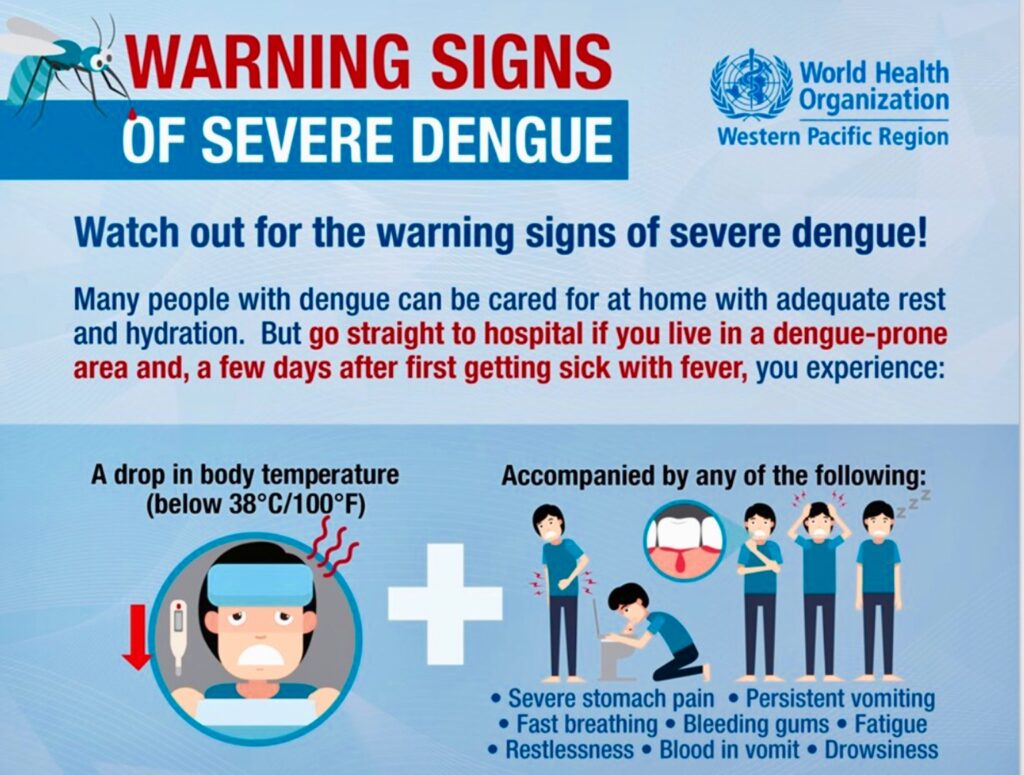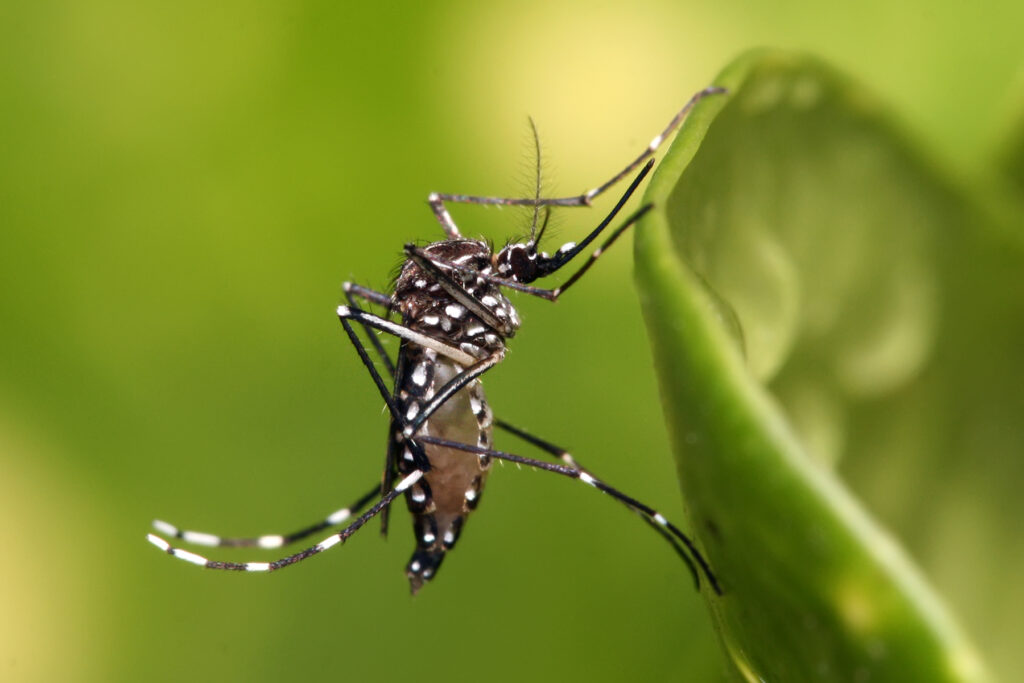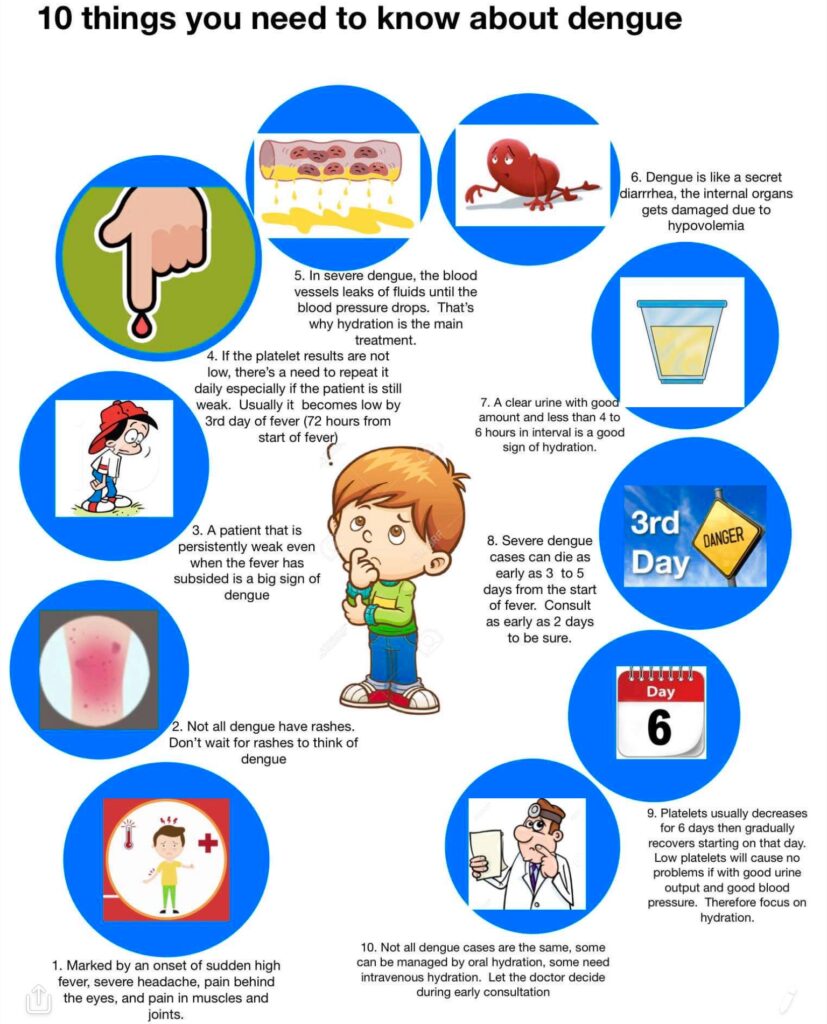By Henrylito D. Tacio
Sarah thought it was just an ordinary fever that knocked out her five-year-old son Michael, so she gave him medication to reduce his temperature. But when she noticed that her son’s nose began to bleed, she took him to a nearby hospital.
“The doctor gave me another medicine and told me to take him back home,” Sarah said. “No blood-test even if my son had a high fever.”
Recalling now, Sarah said that the hospital might have known if it conducted a blood test. Sensing that there was really something wrong with her son, Sarah went to another hospital, where a doctor diagnosed the boy as suffering from dengue fever.

Between January 1, 2023 to December 7, 2023, over 500,000 dengue cases and 750 deaths were reported from eight countries in the Western Pacific Region, according to the World Health Organization (WHO).
The Philippines topped the list with 167,355 cases and 575 deaths. Vietnam closely trailed with 149,557 cases and 36 deaths. Dengue is endemic in both countries.
“The global incidence of dengue has markedly increased over the past two decades, posing a substantial public health challenge,” said the United Nations health agency in a statement.
From 2000 to 2019, the WHO documented a ten-fold surge in reported cases worldwide increasing from 500,000 to 5.2 million. The year 2019 marked an unprecedented peak, with reported instances spreading across 129 countries.
After a slight decline of cases between 2020 and 2022 due to the recent pandemic and lower reporting rate, an upsurge in dengue cases was observed globally in 2023, the WHO reported.
Several factors are associated with the increasing risk of spreading the dengue epidemic. These included the changing distribution of the vectors, especially in previously dengue naïve countries; the consequences of El Nino phenomena in 2023 and climate change leading to increasing temperatures and high rainfall, humidity among others; fragile health systems during the COVID-19 pandemic, political and financial instabilities in countries facing complex humanitarian crises and high population movements.
“These factors also challenge the response to the epidemic and the risk of further spread to other countries,” the WHO pointed out. “Weakness in the surveillance systems in many affected countries may have led to delayed reporting and response and missed identification of symptoms, contributing to increased severe dengue outcomes.”

Dengue virus
Dengue virus (DENV) is transmitted to humans through the bite of infected mosquitoes. The primary vectors that transmit the disease are Aedes aegypti and, to a lesser extent, Aedes albopictus mosquitoes.
DENV has four serotypes: DENV-1, DENV-2, DENV-3, DENV-4. “Infection with one serotype provides long-term immunity to the same serotype and only transient immunity to the other serotypes, after which secondary infections with a different serotype increase the risk for severe dengue,” the WHO explained.
Dengue cases are most commonly asymptomatic or result in mild febrile illness. However, some cases will develop severe dengue, which may involve shock, severe bleeding, or severe organ impairment. “This stage often starts after the fever has gone away and it is preceded by warning signs such as intense abdominal pain, persistent vomiting, bleeding gums, fluid accumulation, lethargy or restlessness, and liver enlargement,” the WHO said.
There is no specific treatment for dengue, but the timely diagnosis of dengue cases, identification of warning signs for severe dengue, and appropriate clinical management are key elements of care to prevent the progression to severe dengue and deaths.
Effective vector control measures
Effective vector control is key to the prevention and control of the DENV, according to the UN health agency. Vector control activities should target all areas where there is a risk of human-vector contact, such as residences, workplaces, schools, and hospitals.
Right now, the WHO promotes Integrated Vector Management (IVM) to control Aedes species. Among the IVM practices are removing potential breeding sites, reducing vector populations, and minimizing individual exposure.

IVM should involve vector control strategies for larvae and adults (that is, environmental management and source reduction), especially monitoring water storage practices, weekly draining and cleaning of household water storage containers, larvicide in non-potable water using WHO-prequalified larvicides at correct dosages, distribution of insecticide-treated nets for fever/dengue inpatients to contain spread of the virus from health facilities.
Personal protective measures
The WHO also recommends personal protective measures during outdoor activities, which include topical repellents to exposed skin or the treatment of clothing and using long-sleeved shirts and pants.
“Indoor protection can also include the use of household insecticide aerosol products, or mosquito coils during the day,” the WHO said. “Window and door screens can reduce the probability of mosquitoes entering the house. Insecticide-treated nets offer good protection to people against mosquito bites while sleeping during the day.”
Since Aedes mosquitoes are most active at dawn and dusk, personal protective measures are recommended particularly at these times of day. “Personal protection measures and mosquito control should also cover workplaces and schools since the vectors are day-biting mosquitoes,” the WHO said.
Case management
Until now, there is no specific treatment for dengue infection. However, early detection and access to appropriate healthcare for case management can reduce mortality, as can rapid detection of severe dengue cases and timely referrals to tertiary healthcare facilities.
According to the WHO, most people with dengue have mild or no symptoms and will get better in 1–2 weeks.
The UN health agency reminded that people who are infected for the second time are at greater risk of severe dengue.
Severe dengue symptoms often come after the fever has gone away such as: severe abdominal pain, persistent vomiting, rapid breathing, bleeding gums or nose, fatigue, restlessness, blood in vomit or stool, being very thirsty, pale and cold skin, and feeling weak.
“People with these severe symptoms, admission is necessary,” said Dr. Lulu C. Bravo, a professor of infectious and tropical diseases. “The patient is subjected to regular blood test monitoring until stable. Fluids are carefully computed and monitored plus as soon as needed, blood or blood components are transfused.” – ###








